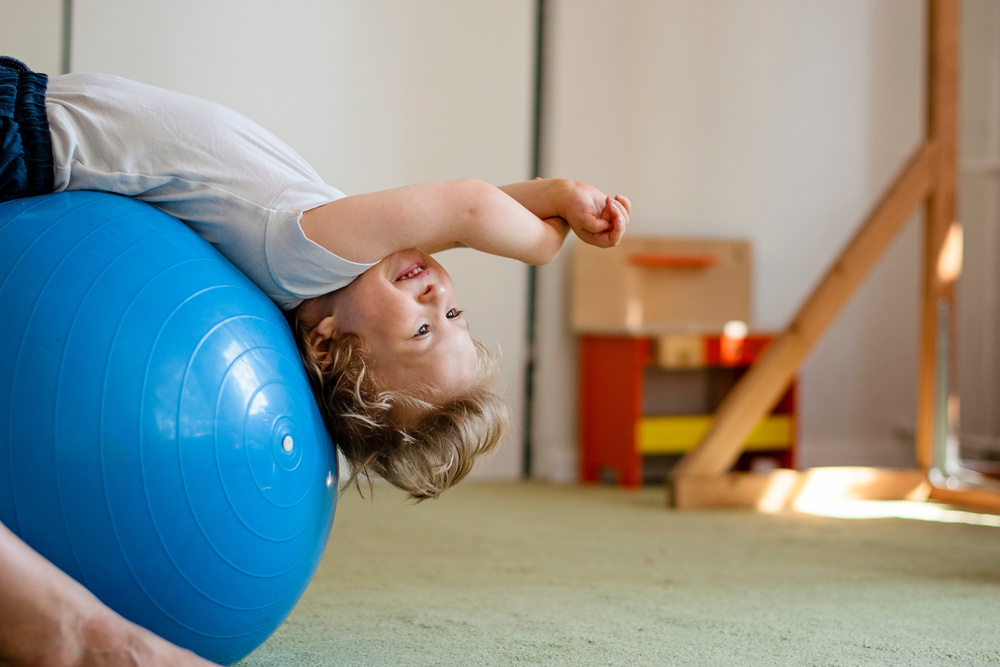5 Ways Physical Therapy Promotes Child Development
Many parents are excited to witness their children reach a new milestone as they grow. However, not all children achieve the same milestone at the same time. Some may be delayed because of a lack of practice, while some could be due to an underlying condition.
Whatever the reason is, no child should be left to cope by themselves. A child with developmental delays or illnesses should be given comprehensive care and support by their parents and the medical community. Physical therapy (PT), particularly pediatric PT, plays a massive part in this.
What Is Pediatric PT?
Pediatric PT specializes in treating kids under 18. It’s a branch of the field focusing on physical therapy for children. The goal of pediatric PT is to help children move their bodies to the best they can. The therapy aims to help them be more mobile, strengthen their muscles, increase their flexibility, improve their range of motion, and enhance their quality of life.
In the United States, about one in six children have developmental delays and disabilities, affecting their cognitive, physical, and language progress. If left untreated, these children will have extremely low self-esteem and self-confidence and might not be able to live independently. Thus, it’s crucial to identify the delay at the soonest time so proper treatment can be applied.
What Childhood Illnesses Need PT?
Some children are born with congenital disabilities, which can be easily identified even when the infant is in the mother’s womb. Some would gradually show up as they grow, and you’ll notice this when they have difficulty sitting, they’re only turning to one side, can’t hold their heads up, or fail to chew food properly. These signs could be due to illnesses such as the following:
- Autism
- Cerebral palsy
- Down syndrome
- Global developmental delay
- Neuromuscular disorders
Some children can also be exposed to accidents that could affect their spinal cord and brain, causing significant effects that negatively influence their body’s movement. Spinal cord injuries and traumatic brain injury can leave a child with a temporary or permanent disability.
Why Would Your Child Need PT?
For your child to grow up to be a successful adult, they need to overcome their limitations soon. This is crucial in ensuring they will have a healthy body to face the future. A physical therapist will help your child by doing the following:
- Evaluate their strengths
- Analyze their gait and posture
- Assess their flexibility
- Check their range of motion
Moreover, there are ways PT can help a child improve their development, and here are some of them:
1. Strengthens Their Muscles
A child with cerebral palsy has difficulty controlling their body movements depending on the brain area affected by the illness. Because this is a non-progressive disease, PT is crucial in the early stages to assist the child in learning the movements and mastering them as they grow.
Some types of cerebral palsy can severely affect a child’s movement, so they are unable to control what their body does. In cases like this, if the muscle is not strong enough, the affected area can progressively weaken over time. A physical therapist can apply exercises to strengthen the muscle to counter the disease.
2. Improves Coordination
For ataxic cerebral palsy, there is no control in the order of movement of a child’s body as this affects the cerebellum, which specializes in the coordination and precise movement of specific body parts. This results in shaky and uncoordinated movements, which for some people would appear to be clumsiness.
Ataxic cerebral palsy can cause a child to have the inability to pick something up correctly or walk normally. Looking ahead, they might be unable to use their hands to write correctly or use the keyboard of a computer, which is vital in this modern world. PT can help develop the child’s fine motor skills, so they can perform these functions better.
3. Reduces Muscle Spasticity
A child with spastic cerebral palsy will have limited muscle movements; when this is ignored, the muscles can become very stiff and tight and develop jerky movements over time. The muscles and joints can also be excruciatingly painful because of reduced mobility. Hence, simple tasks can become very challenging.
Spastic cerebral palsy can also result in hypertonia, the abnormal increase in muscle activity that could result in the muscle being severely flexed, just like you would see in a person with a scissoring gait. PT can help a child develop muscle control so the gait would look as normal as possible.
4. Improves Balance And Coordination
Children in the autism spectrum typically have low muscle tone, poor balance, and a lack of coordination because many of them can’t focus on a specific task resulting in a delay in development. A physical therapist will apply techniques to help the child fine-tune their movements to reinforce motor skills.
For an autistic child, therapy enveloped in play is the most effective. With play-focused therapy, the child can be more robust, confident, and independent despite their limitations. Eventually, this contributes to their socialization and communication skills, and who knows, they can even conquer mountains and become renowned in whatever field they choose.
5. Helps Children With Down Syndrome
Like cerebral palsy, a child diagnosed with Down syndrome have weak muscles, low muscle tone, loose joints, poor balance and posture, and poor motor skills. Because of their cognitive delay, they can have difficulty learning complex movements.
When this is not addressed, a child with Down syndrome may opt to stay inactive, resulting in poor health and obesity. With PT, a child with this illness can be more active when they get assistance in strengthening their muscles, increasing the flexibility of their joints, and improving their balance and coordination.
Additionally, because a child with Down syndrome can have poor posture, they need to have it aligned with the help of a physical therapist. Without a PT intervention, a child with Down syndrome can resort to adapting creative but improper movements to do what they want, which could cause added stress to the bones and joints.
A physical therapist will teach the child how to move correctly without sacrificing the function of that specific body part. Eventually, this will increase their confidence and give them a boost in morale. Some children with Down syndrome might need additional tools like short ankle braces and other orthotics to improve their balance and walking and reduce their pain. A physical therapist can make this recommendation for them.
Conclusion
Developmental delays can make a child suffer growing up. As a parent, helping your child cope so they can thrive in this world is just as important as feeding them and giving a roof over their heads. Attending to these delays as soon as you witness them can greatly impact your child’s life.



